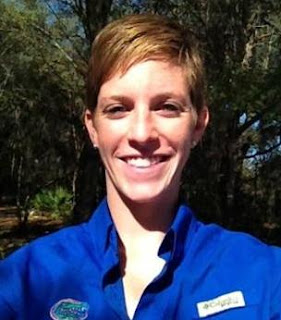
Jennie Guan, Dietetic Intern,
Bay Pines VA Healthcare System
February is American Heart Month. Heart disease is the number one killer for both men and women in the United States. While there are many risk factors, what you eat and how physically active you are can pay big dividends when it comes to taking care of your heart. Eating more fruits and vegetables, lowering saturated and trans fat intake, decreasing sodium levels, and keeping a healthy weight can help you on your journey to taking good care of your heart.
Most fruits and vegetables are low in calories and high in vitamins, minerals, and fiber, making them heart healthy. Eating a variety of fruits and vegetables may help you control your weight and your blood pressure. A diet high in fiber can lower your risk of heart disease. Vegetables, fruits and whole-grain foods contain fiber that can help lower your blood cholesterol and help you feel full, which may help you manage your weight.
Make smart choices when it comes to fats. Choose heart healthy fats that are unsaturated in small amounts. Fats like olive and canola oils are good choices for your heart. Some of the best foods for lowering cholesterol include oatmeal, fatty fish like salmon and trout, walnuts (and other nuts), olive oil, and foods fortified with sterols or stanols. Spreads like Benecol and Promise Activ are examples of these products.
Unhealthy cholesterol levels increase your risk for heart disease, so keeping yours low is key to a healthier heart. Try to limit the saturated and trans fats, two fats that raise your blood cholesterol. Most animal foods are high in saturated fat, so choose lean meats and low fat dairy products. Reduce the amount of solid fats like butter, margarine, or shortening that you add to food when cooking. Read those labels when buying products to help you find the trans fat in a product. And pay close attention to the amount of fast foods you eat as they can be high in trans fats too.
Sodium can be another deal breaker. Consuming high amounts of sodium can contribute to high blood pressure, which is a major risk factor for cardiovascular disease. The American Heart Association recommends no more than about a teaspoon of salt a day for an adult. Reducing the sodium in your food is a big part of a heart-healthy diet. Since salt is sodium chloride, try to limit the amount you use in the foods you prepare. Most of the sodium in our diet is hidden in processed foods like canned foods, processed meats, instant foods, and many frozen convenience foods, so pay attention to what you put in your shopping cart. Restaurant meals are usually high in sodium as well. If you plan to eat out, try to keep sodium low at other meals that day.
Don’t forget the physical activity. Physical activity is recommended to promote heart health, maintain weight or promote gradual weight loss. Thirty to 60 minutes of exercise is what we need on most days. Do what you enjoy to help you get active. It could be a brisk walk, playing with the children, gardening or dancing. If you’re having trouble exercising 30 to 60 minutes, break it up into small 10 to 15 minute blocks of time. Always be sure to check with your healthcare provider first.
The Therapeutic Lifestyle Changes (TLC) diet and Dietary Approaches to Stop Hypertension (DASH) diet are good at promoting heart health. For further information about each diet, you can go to the websites.
The Therapeutic Lifestyle Changes (TLC) diet is recommended by the National Cholesterol Education Program of the U.S. National Institutes of Health. The TLC Diet is a low saturated fat, low cholesterol diet that will help to reduce your blood cholesterol level thereby decreasing your chance of developing heart disease. http://www.nhlbi.nih.gov/cgi-bin/chd/step2intro.cgi
The DASH diet is a lifelong approach to healthy eating that's designed to help treat or prevent high blood pressure (hypertension). http://dashdiet.org/
To decrease your risk of heart disease, your best and easiest way is to consume a diet rich in fruits, vegetables, whole grains, and fat free or low fat dairy foods as well as lean protein. Include some physical activity too!
Participate in National Wear Red Day—Everyone (men too) can support the fight against heart disease in women by wearing red on February 3, 2012. Click here to learn more about Wear Red Day!
The American Heart Association: Diet and Lifestyle Recommendations: Revision 2006

